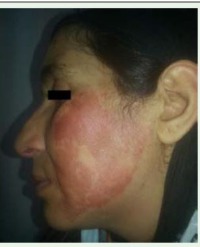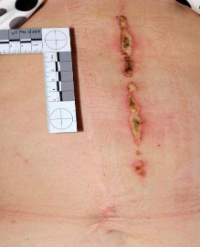
Skin Reaction on Face Following the Use of Cloves (Syzygium aromaticum)
Clove (Syzygium aromaticum) (Figure 1) is a plant-derived spice that has been traditionally used for centuries as food preservative and as medicinal plants [1].
The anti-inflammatory, antioxidant and bactericide activities of clove are mainly due to its major components, which is the eugenol with a concentration rate ranging from to (77-95%) [2,3].
Clove is generally safe when taken in foods in lower concentrations [4], however, it is not recommended as a topical application on skin due to insufficiency of safety and toxicity data [5]; it was found to be highly cytotoxic for human fibroblasts and endothelial cells [6] leading to allergic skin reactions (burning, hives, itching, irritation, rash…), ulcer formation and/or tissue necrosis [7].
Samir El Mazouz1, Abdelmoughit Echchaoui1*, Narjis Badrane2 and Majda
Askour3



